12 Roof-Repair Warning Signs (Photo Guide for Birmingham Homes)

TL;DR: 30% of UK home insurance pay-outs stem from water damage—most preventable with early roof repairs. Learn to spot 12 critical warning signs from missing tiles to energy bill spikes. Birmingham's heavy rainfall makes regular inspections essential.
12 Signs Your Roof Needs Repairs – Photo Guide for Birmingham Weather
Your roof stands as your home's first line of defence against Birmingham's notorious wet weather. With 30% of home insurance pay-outs related to water damage , spotting early warning signs could save you thousands in repairs. This comprehensive photo guide helps you identify roof problems before they escalate into costly emergencies.
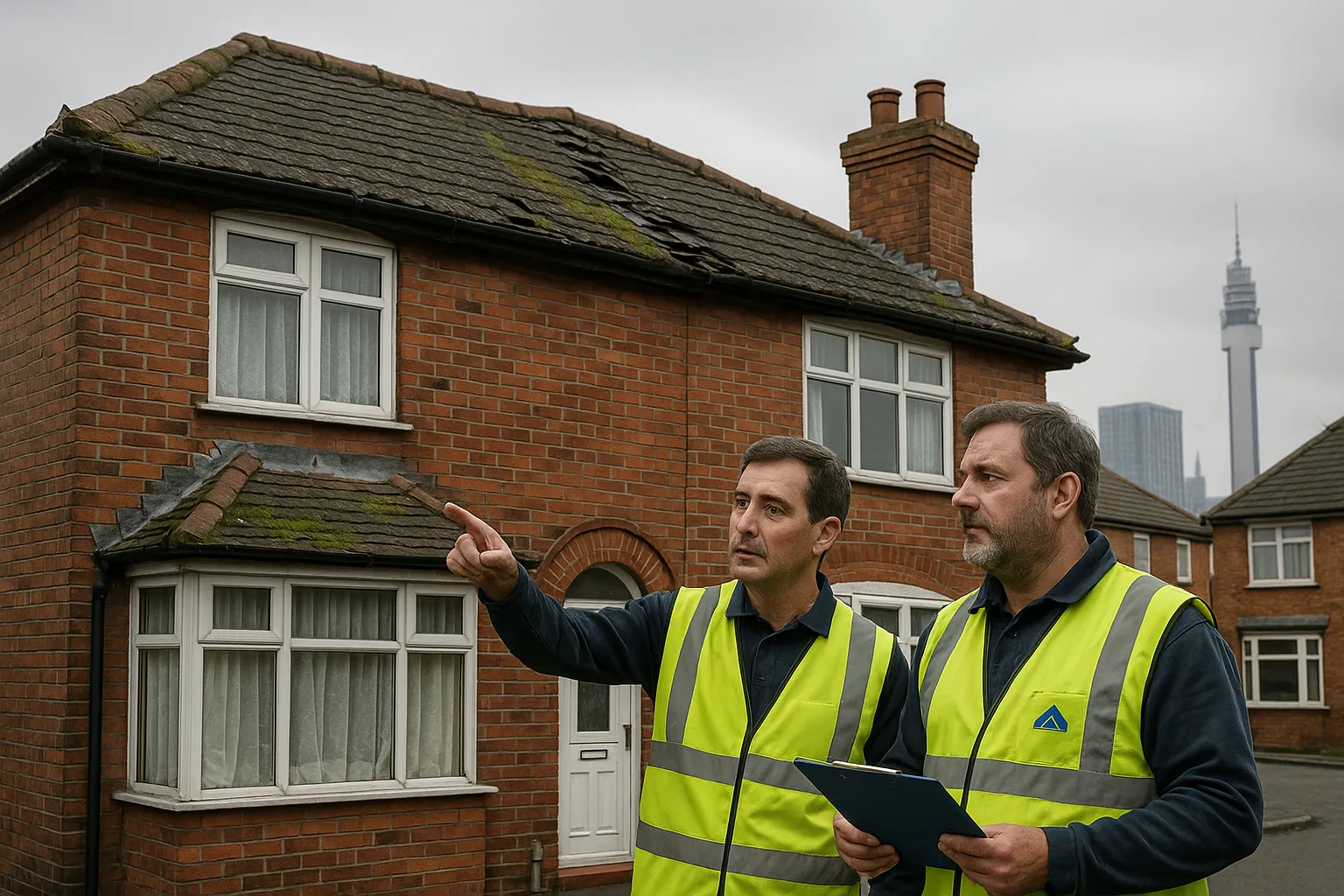
1. Missing or Slipped Tiles
Wind uplift during Birmingham's autumn storms frequently dislodges roof tiles, creating immediate vulnerabilities. If worn or missing tiles become an extensive problem on your roof, the entire thing will need replacing . Check your full range of roofing services in Birmingham to address these issues promptly.
Even a single missing tile exposes your roof's underlayment to rain, potentially causing water damage within hours during heavy downpours. Walk around your property after storms, looking for tiles on the ground or visible gaps in your roof covering.

Action Step: Count any missing tiles—more than three typically warrants immediate professional assessment.
2. Cracked or Broken Tiles/Slates
Temperature fluctuations between Birmingham's damp winters and occasional summer heatwaves cause tiles to expand and contract, leading to cracks. Cracked tiles expose the underlying layers of your roof to the elements, leading to potential water damage and other issues , as noted in Distinctive Roofing's tile repair guide.
Hairline cracks might seem insignificant, but they act like straws, drawing water into your roof structure through capillary action. During freeze-thaw cycles, trapped water expands, widening these cracks exponentially.
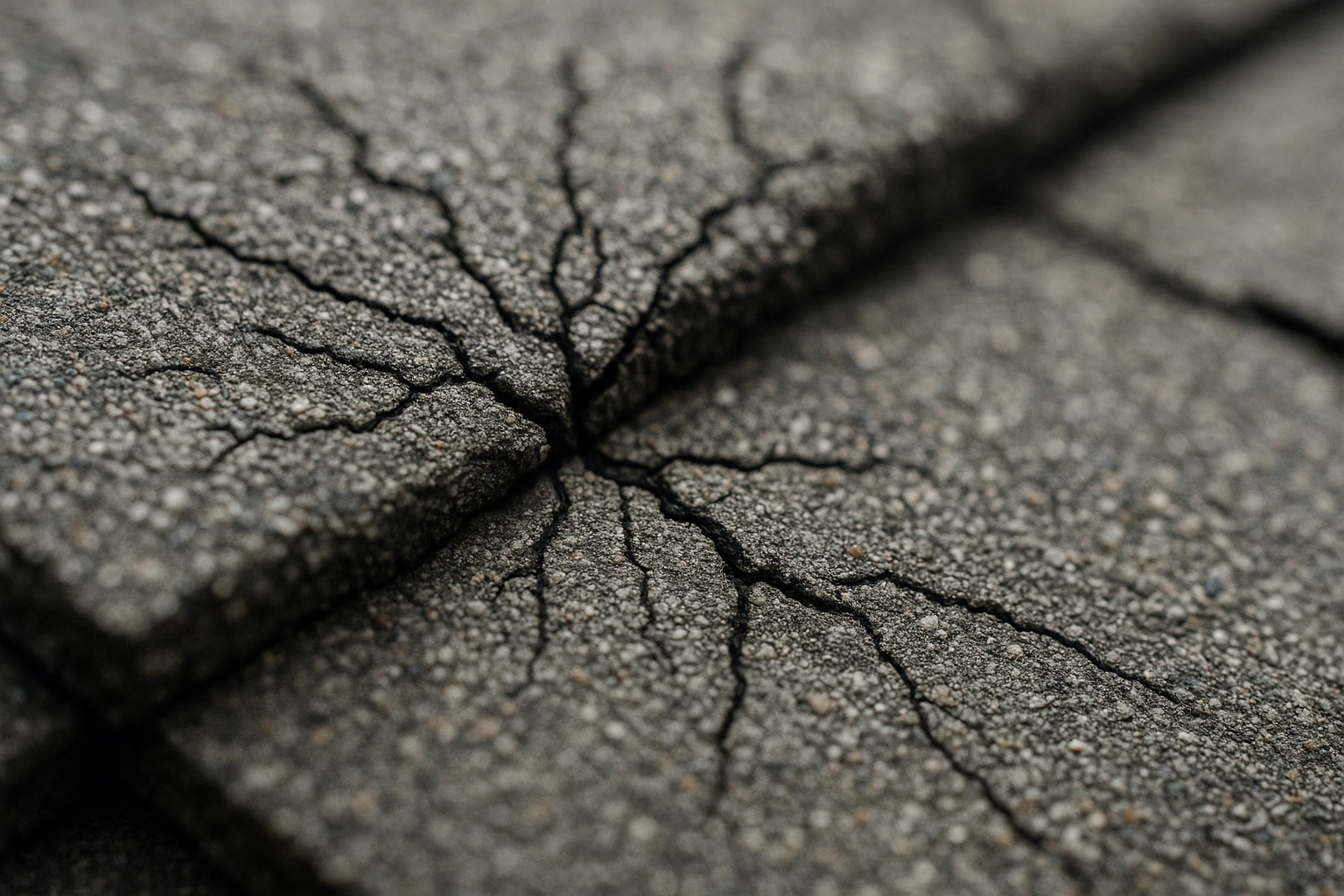
Action Step: Use binoculars to inspect tiles safely from ground level—any visible cracks require professional roof repairs.
3. Granule Loss on Concrete Tiles
Those sandy granules on concrete tiles aren't decorative—they're UV protection. Without them, tiles deteriorate rapidly under sunlight. Check your gutters after rainfall; excessive granule accumulation signals advanced tile wear.
Birmingham's industrial heritage means slightly acidic rain can accelerate granule loss. Once tiles lose their protective coating, they absorb more water, becoming heavier and more prone to cracking.
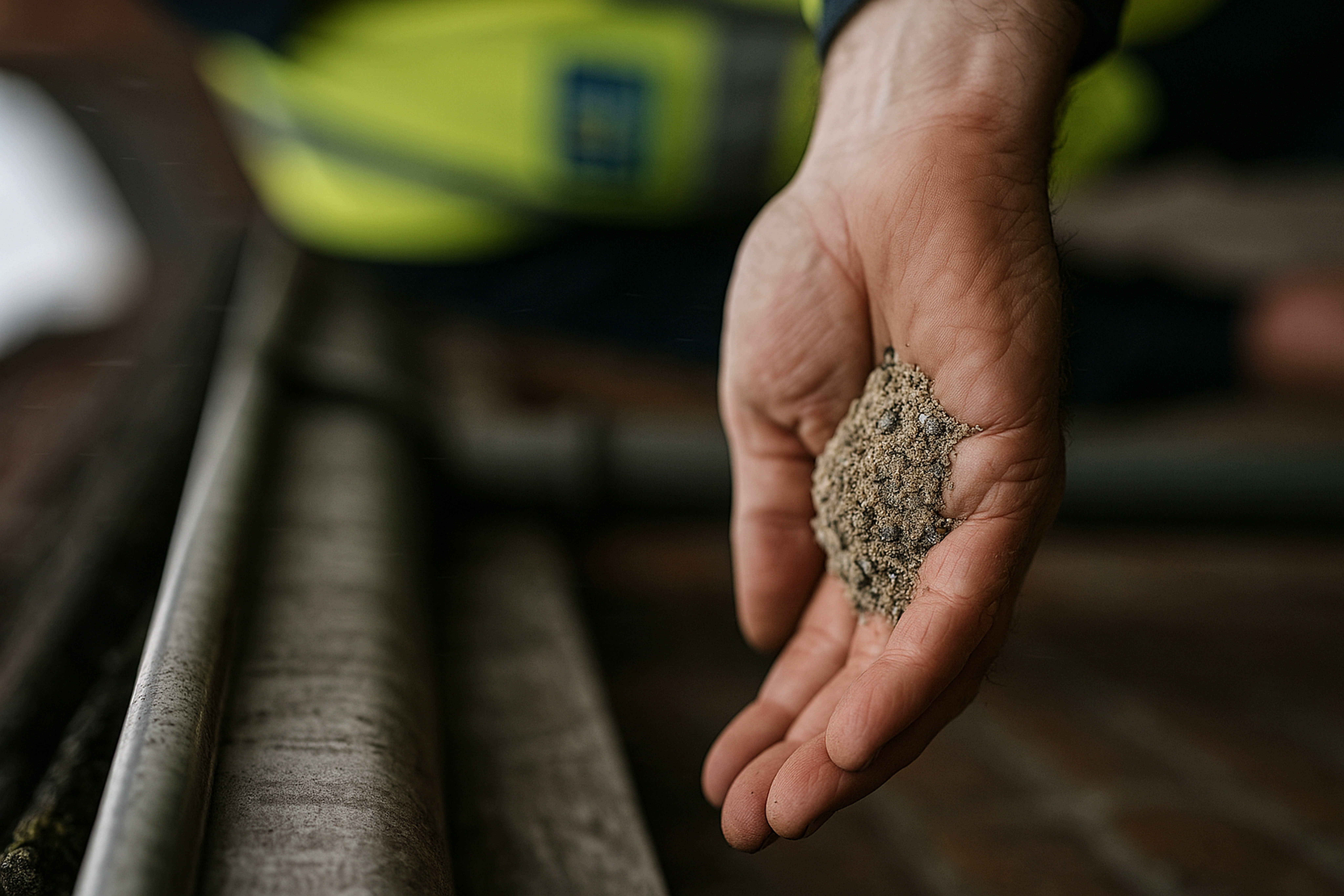
Action Step: If you collect more than a cupful of granules from your gutters monthly, schedule an inspection.
4. Sagging Ridge or Roofline
A straight roofline should run true along your ridge. Any visible dip or bow indicates serious structural issues requiring immediate attention. Exposure to extreme weather conditions can impact the functionality of your roof as the boards can start to buckle and break under the weight of the water, causing the roof to sag .
Sagging often results from water-logged insulation or compromised roof timbers. Left unchecked, it can lead to catastrophic collapse, particularly under snow load or during heavy rainfall.
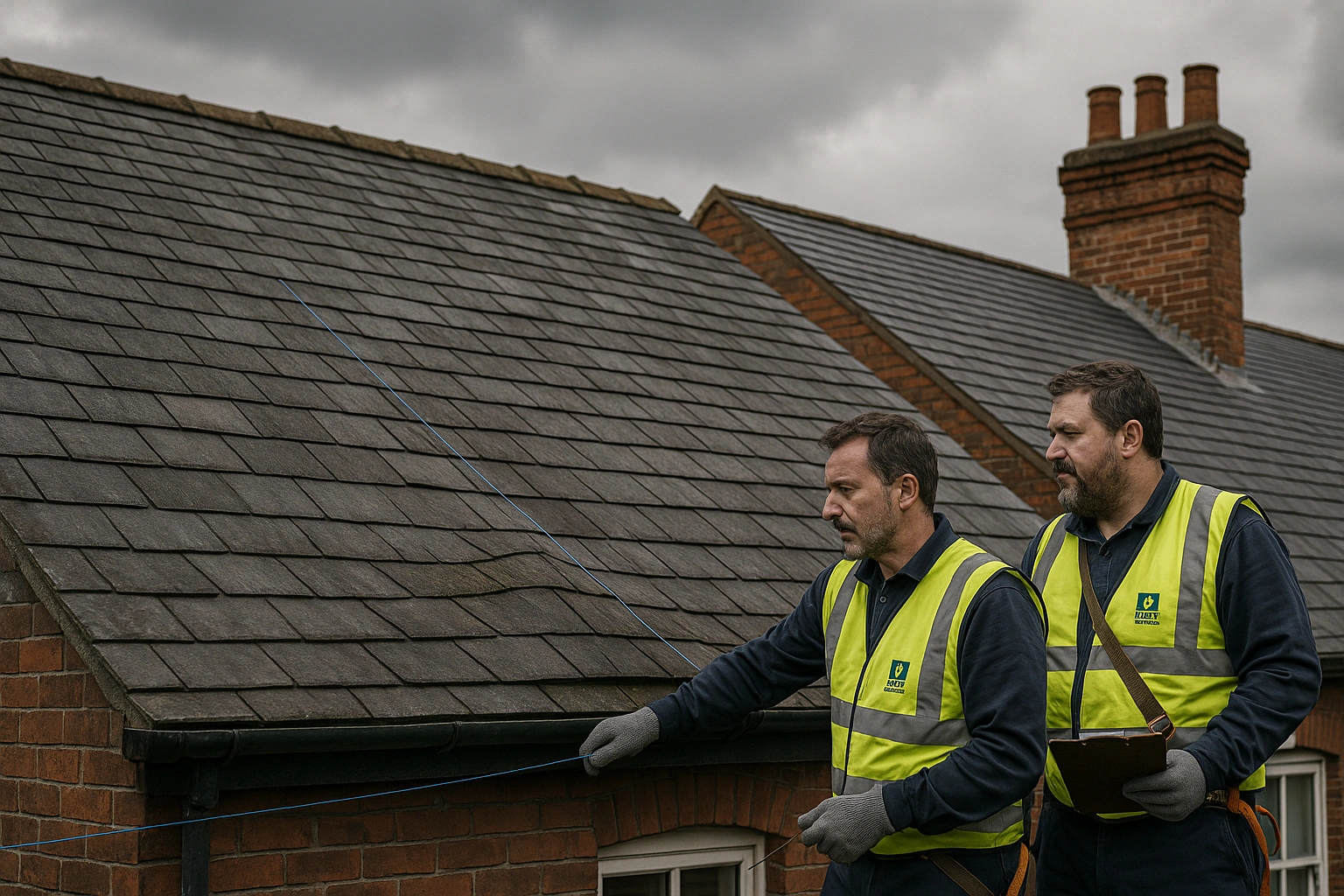
Action Step: Place a long straight edge against your roofline—any gap exceeding 10cm requires urgent professional evaluation. For a step-by-step emergency response, check our emergency roof-repair checklist.
5. Damaged or Lifted Flashing
Flashing seals vulnerable joints where your roof meets walls, chimneys, or dormers. Birmingham's driving rain specifically targets these weak points. Damaged or deteriorated flashing can lead to water leaks and other problems .
Lead flashing can lift after decades of thermal movement, whilst modern alternatives may crack or separate from masonry. Either failure creates a direct water pathway into your home's structure.
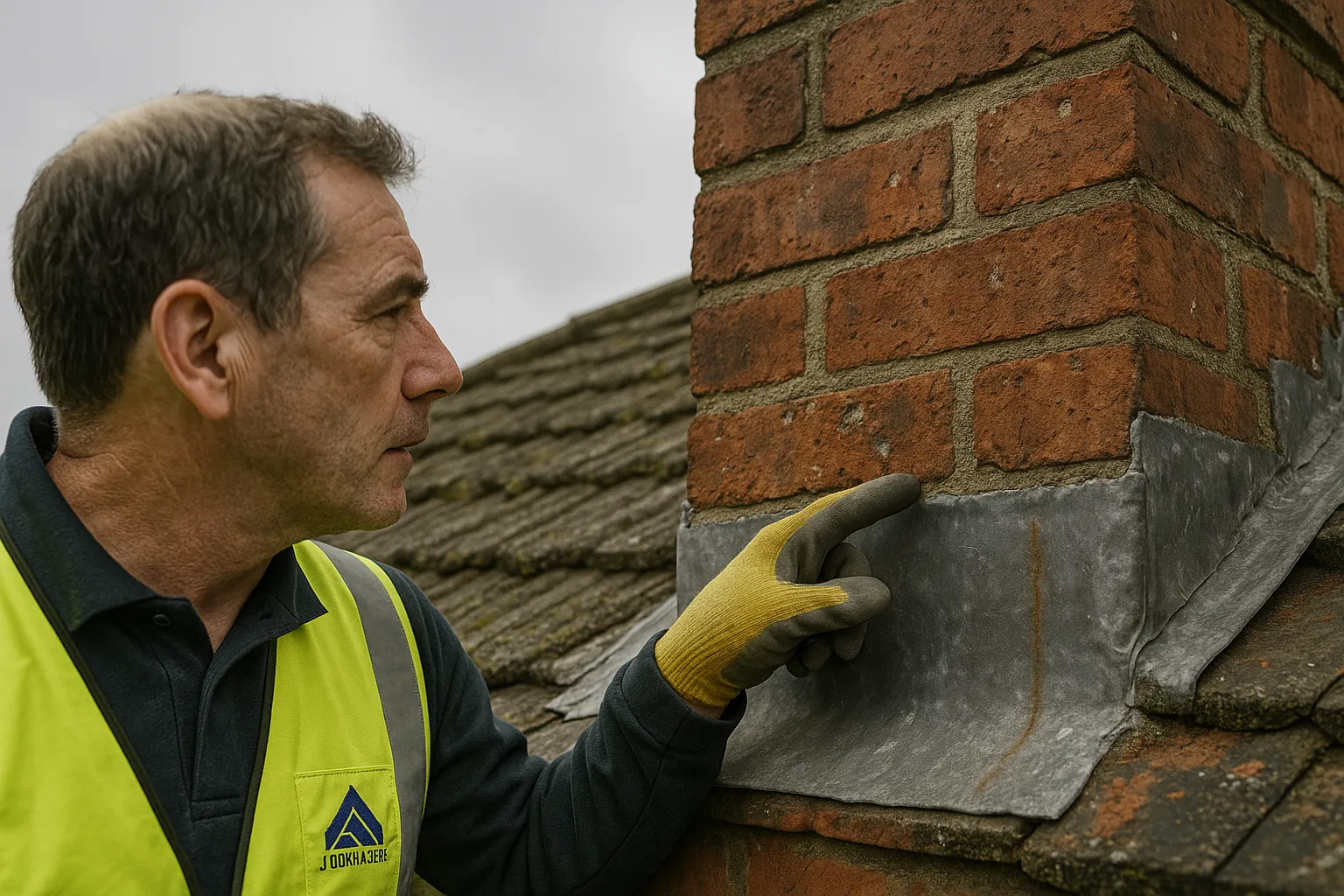
Action Step: Inspect flashing annually, looking for gaps, rust stains, or separation from adjacent surfaces.
6. Moss & Algae Overgrowth
Birmingham's damp climate creates perfect conditions for moss growth. While picturesque on garden walls, roof moss retains moisture against tiles, accelerating deterioration. The NFRC homeowner FAQs recommend addressing moss promptly to prevent structural damage.
Moss roots work between tiles, lifting them slightly and creating water channels. During winter, trapped moisture freezes, expanding gaps further. North-facing roofs and shaded areas under trees suffer most.
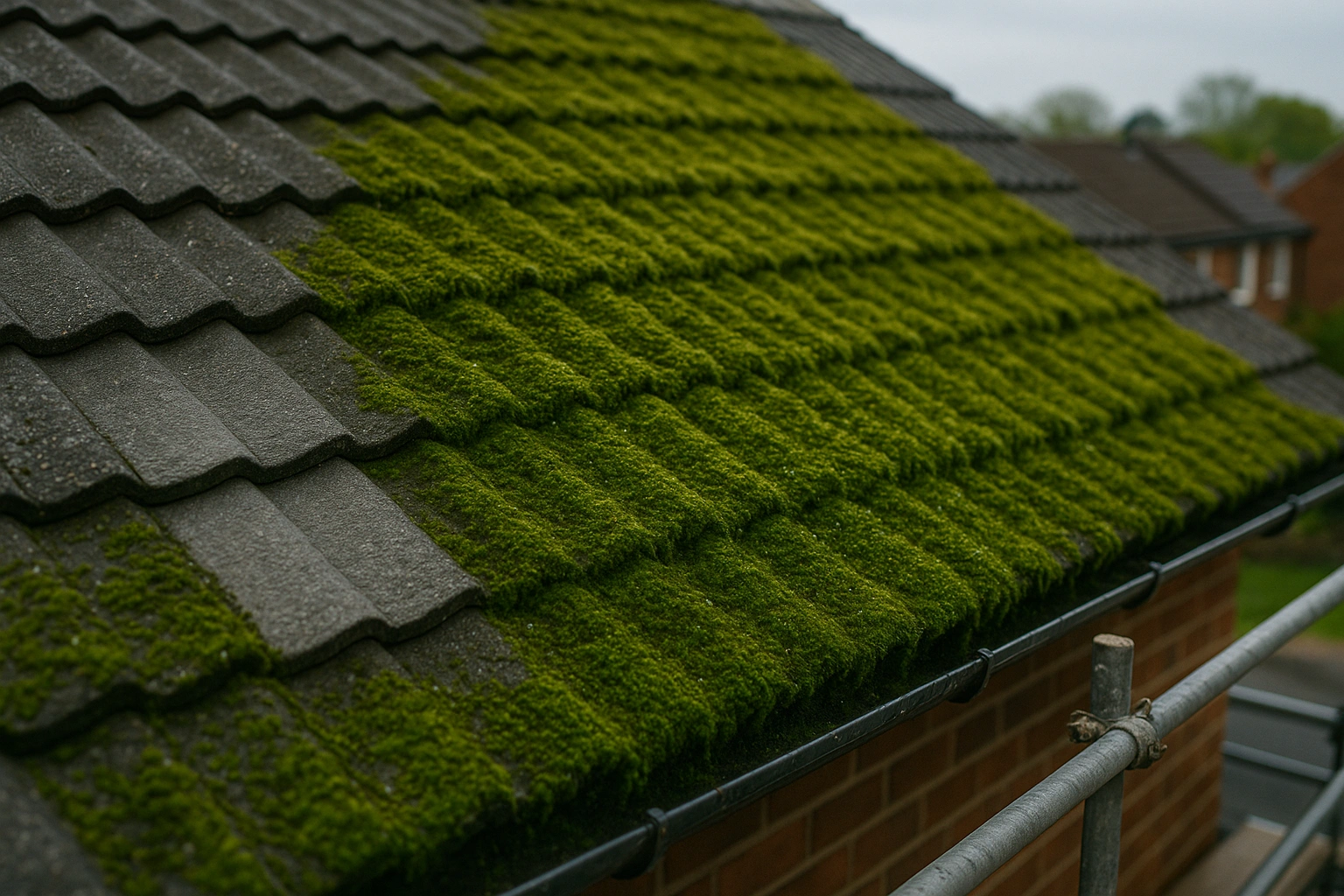
Action Step: If moss covers more than 20% of any roof section, professional cleaning is essential—DIY pressure washing can damage tiles.
7. Gutter Overflow & Debris
Overflowing gutters might seem unrelated to roof condition, but they're often the first sign of tile problems. Granules, moss, and tile fragments wash into gutters, causing blockages that force water back under tiles.
Regular gutter cleaning reveals your roof's health. Finding excessive debris indicates accelerated roof wear. Persistent overflow stains on fascias suggest chronic drainage issues needing investigation.
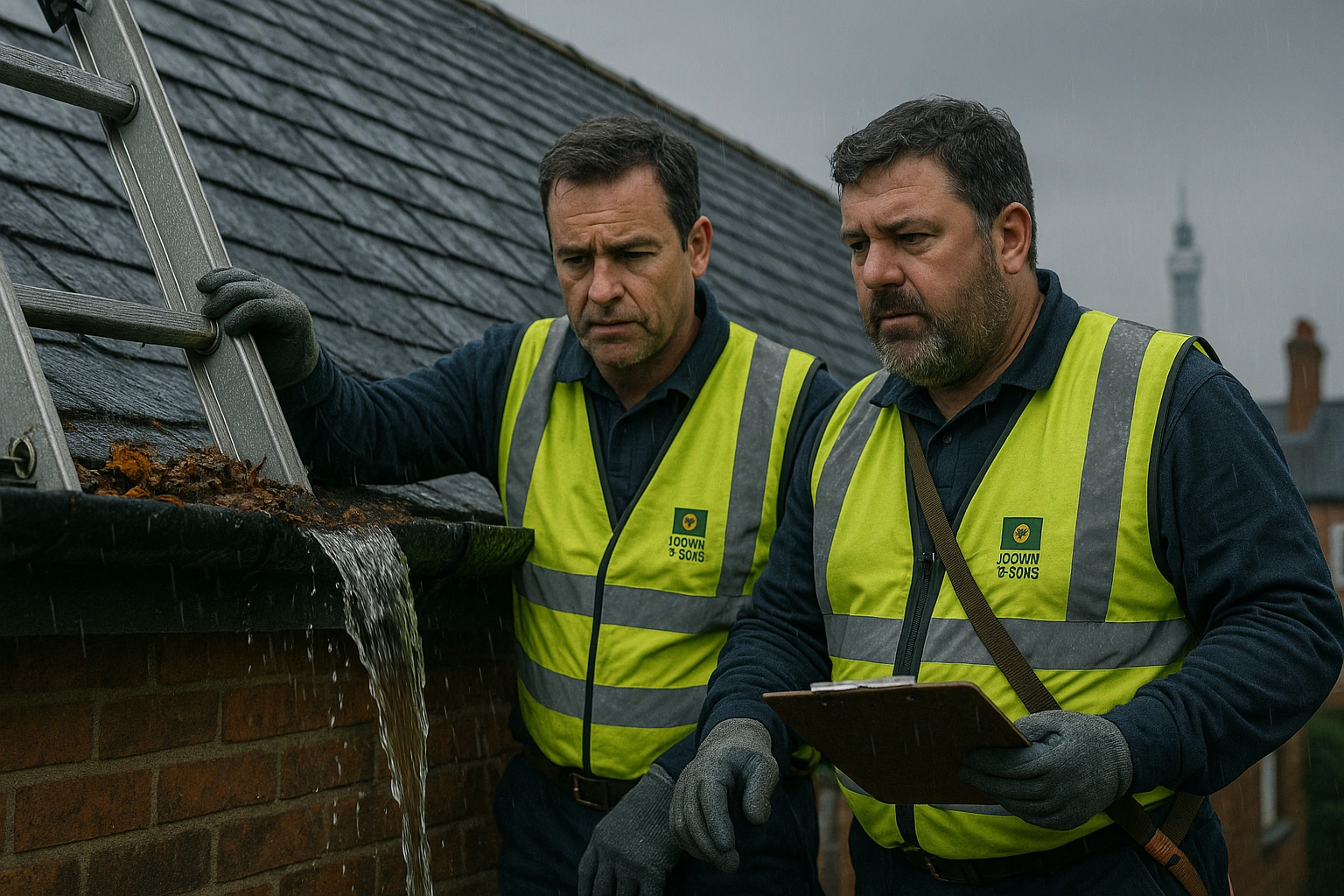
Action Step: Clean gutters biannually, documenting debris types—sudden increases warrant roof inspection.
8. Ceiling Stains or Damp Patches Indoors
Brown ceiling stains represent advanced water infiltration—by this stage, significant hidden damage has likely occurred. According to Lloyd & Whyte's insurance statistics, water damage claims cost UK insurers billions annually.
Start inspections in your loft during rainfall. Look for drips, damp insulation, or water tracks on timbers. Even minor leaks can saturate insulation, reducing thermal efficiency and promoting mould growth.
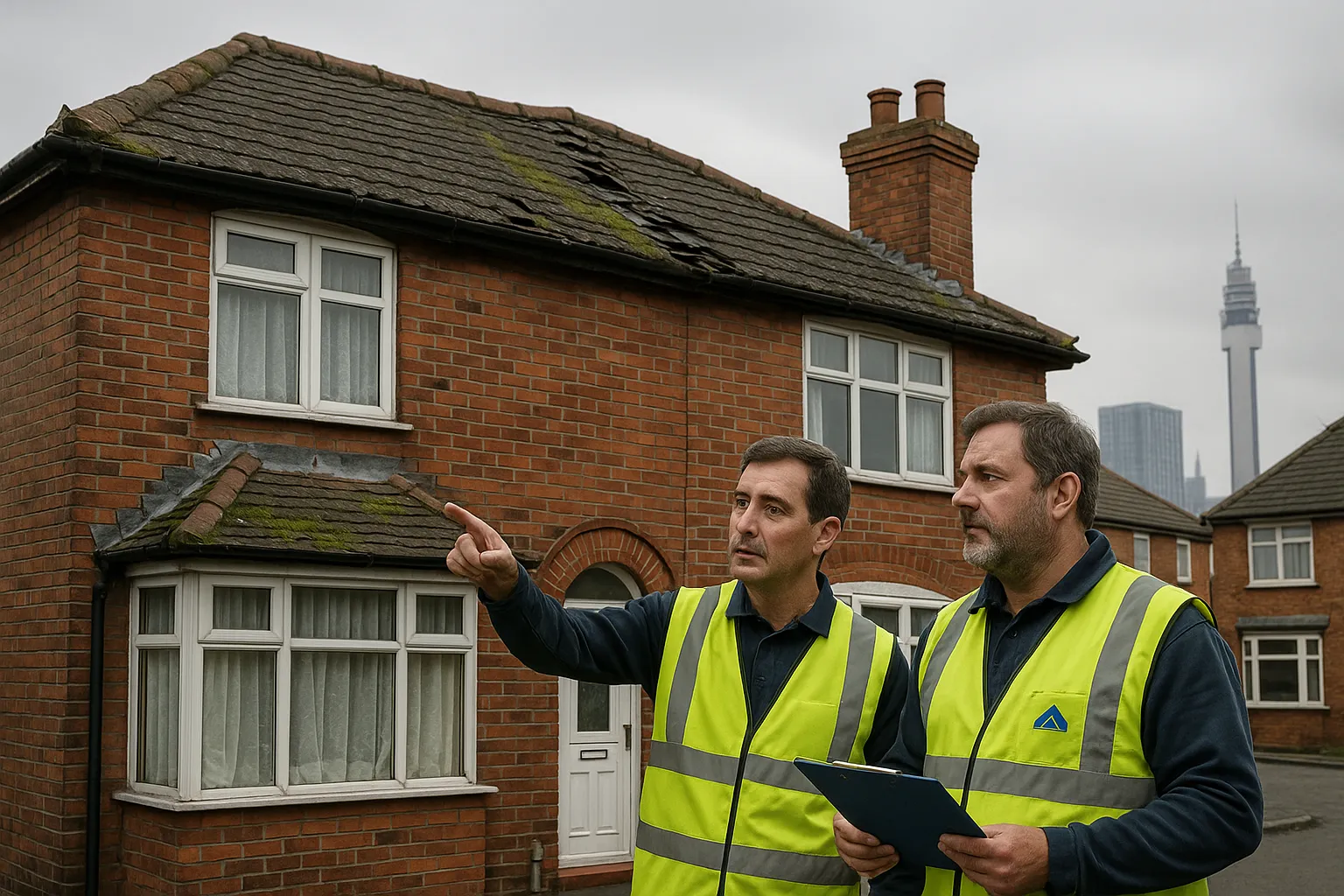
Action Step: Mark stain boundaries with pencil—growth indicates active leaks requiring immediate repair.
9. Light Shining Through Loft Boards
Your loft should be dark during daytime. If you notice any gaps where the summer sun is filtering through the roof boards then you must seek help from a professional roofing company straight away .
Pinholes of light indicate missing tiles, torn felt, or separated boards. Each represents a water entry point during Birmingham's frequent rainfall. Even tiny gaps admit surprising water volumes during storms.

Action Step: Conduct daylight inspections on bright days—mark all light penetrations for professional assessment.
10. Peeling Exterior Paint near the Roofline
Paint failure near roof edges often indicates trapped moisture from inadequate ventilation or water ingress. The problem typically starts subtly with minor bubbling before progressing to wholesale paint failure.
Poor roof ventilation causes condensation in roof spaces, eventually saturating fascia boards and soffits. This moisture migrates outward, lifting paint and potentially rotting timber beneath.
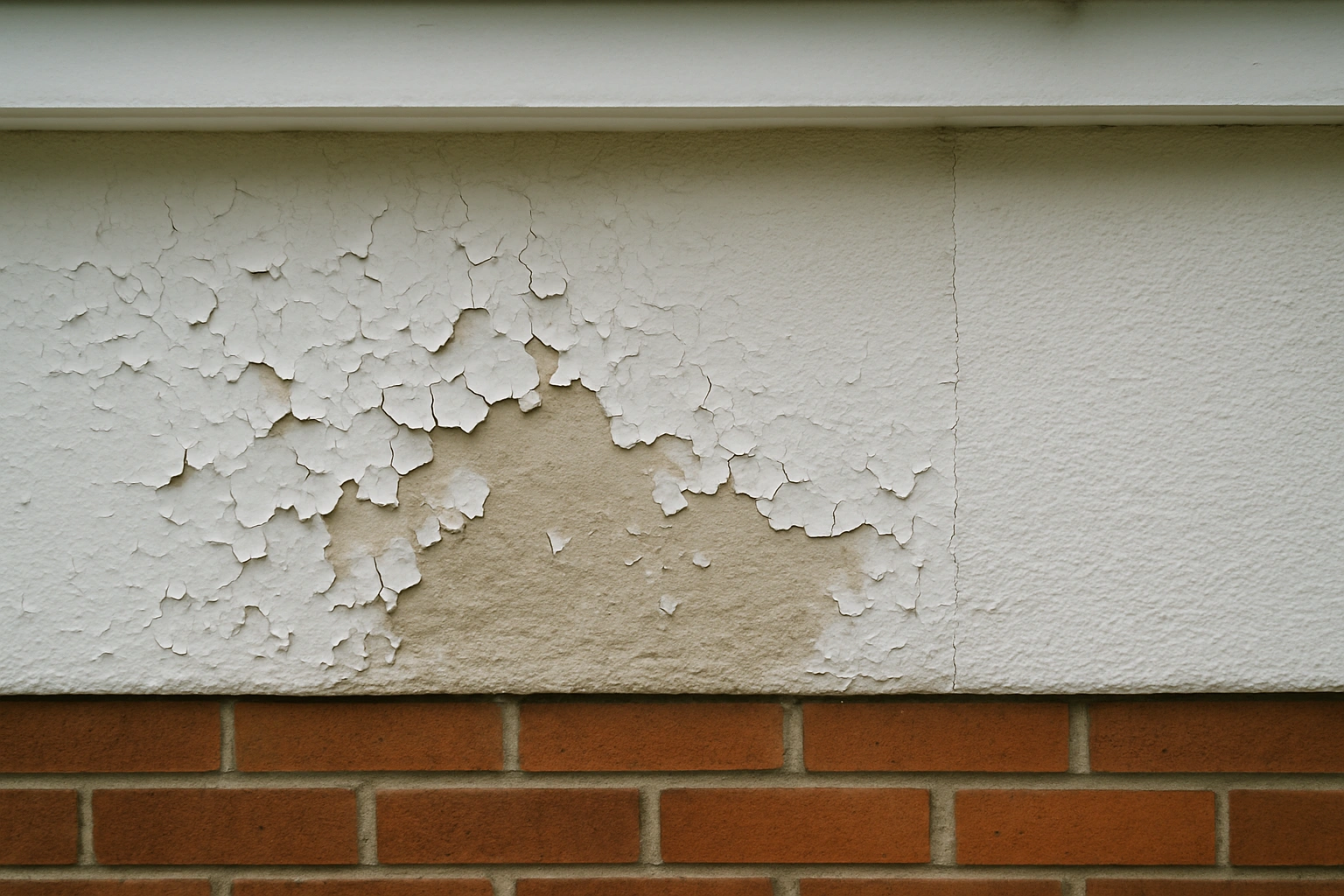
Action Step: Probe soft or peeling areas with a screwdriver—sponginess indicates rot requiring immediate attention.
11. Rising Energy Bills (Heat Loss)
Sudden heating cost increases often trace back to compromised roof insulation. Water-damaged insulation loses thermal resistance, forcing heating systems to work harder maintaining comfortable temperatures.
Modern thermal imaging can reveal heat loss patterns, identifying problem areas invisible to naked eyes. Wet insulation shows as cold spots, indicating water ingress points needing investigation.

Action Step: Compare energy bills year-on-year—increases exceeding 15% without usage changes suggest insulation problems.
12. Age Over 25 Years Without Inspection
Even quality roofs require regular assessment. The NFRC actively ensures that all our members offer high standards of workmanship and sound business practice through a strict Code of Practice and vetting procedures, including site inspections and adherence to relevant regulations .
Birmingham properties built during post-war reconstruction often feature concrete tiles now approaching replacement age. Without professional inspection, hidden deterioration progresses unchecked until catastrophic failure occurs.
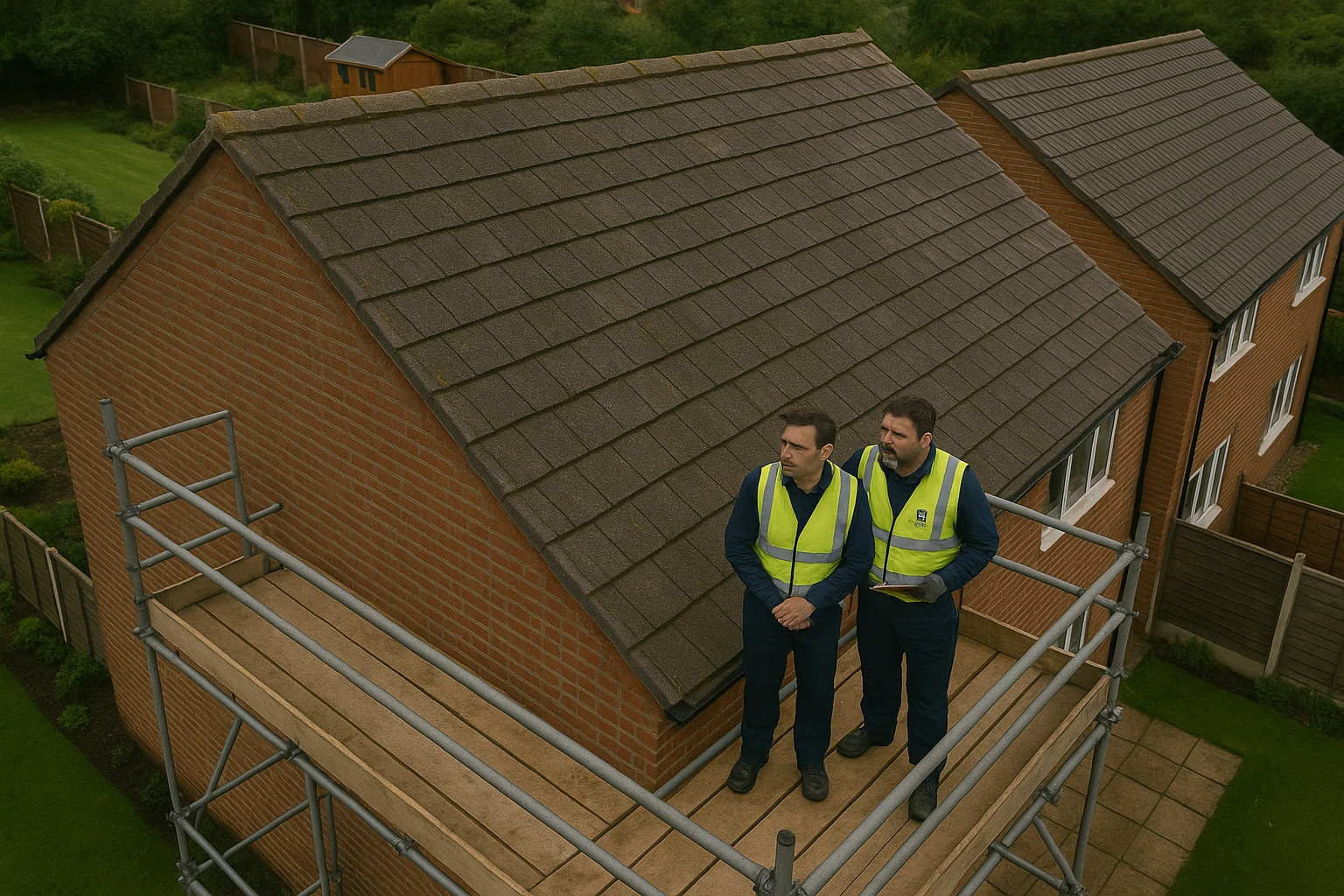
Action Step: Book professional inspections every 10 years, or every 5 years for roofs exceeding 25 years old.
When to Call a Professional Roofer
Don't wait for multiple warning signs before seeking help. Any single issue from this list warrants professional assessment. Our NFRC-certified contractor status ensures work meets the highest industry standards.
Early intervention typically costs hundreds rather than thousands. Our 24-hour emergency call-out service addresses urgent issues before they escalate. Remember, insurance often requires professional assessment for water damage claims. If repair bills are adding up, consult our updated new-roof cost guide to weigh replacement options.
For comprehensive roof evaluation or repairs, speak to an experienced roofer today. We also specialise in flat roof installation for extensions and conversions.
FAQs
Do small leaks fix themselves? No, roof leaks never self-repair. Even tiny leaks worsen progressively, causing exponentially increasing damage. Water finds the path of least resistance, potentially travelling metres before showing internally.
Will insurance cover storm damage? Most home insurance policies cover sudden storm damage but exclude gradual deterioration. Document damage immediately with photos and professional assessments. Pre-existing issues often void claims, making regular maintenance essential.
How much does a roof survey cost? Professional roof surveys typically range £150-£400 depending on property size and access requirements. This investment often identifies issues saving thousands in future repairs. Many contractors offer free initial assessments.
Can drones replace physical inspections? Drones provide excellent overview assessments but cannot detect internal issues like rotten timbers or compromised felt. They complement rather than replace hands-on professional inspections, particularly for insurance purposes.
